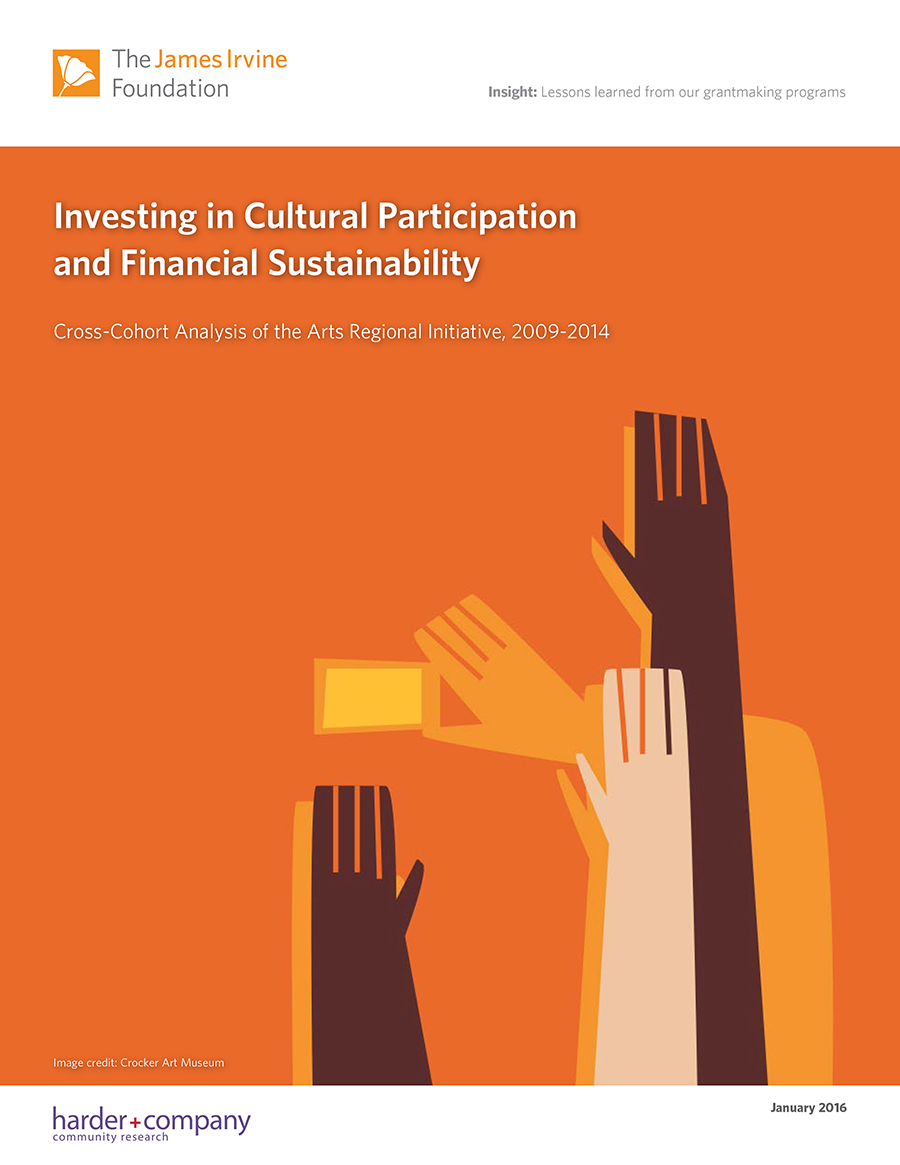Investing in Cultural Participation and Financial Sustainability
Cross-Cohort Analysis of the Arts Regional Initiative, 2009-2014
January 2016, 19 pages. The James Irvine Foundation, One Bush Street, Suite 800, San Francisco, California, 94104. www.irvine.org.
Download:
![]() Investing in Cultural Participation and Financial Sustainability (524 Kb)
Investing in Cultural Participation and Financial Sustainability (524 Kb)
The Arts Regional Initiative was a partnership between The James Irvine Foundation and 36 arts nonprofits in Southern California, the Central Valley, and the Central Coast — locales that, when compared to California as a whole, are home to people with lower income and education levels while reflecting higher proportions of younger, more ethnically diverse populations.
In a second phase of the Initiative, between 2009 and 2014, grantee organizations worked to increase cultural participation and improve financial sustainability. The Initiative unfolded at the height of the Great Recession, which influenced grantee approaches to increasing cultural participation, and limited their ability to advance financial sustainability. Despite this challenge, many Arts Regional Initiative grantees achieved significant transformations. Most reached their goals for increased cultural participation by expanding the size of their audiences, increasing audience involvement, or attracting new, demographically distinct audiences. Some discovered and tested new outreach techniques. Many developed new capacity to capture, analyze, and use data to inform decision-making.
Initiative evaluation by Harder+Company Community Research generated insights that arts organizations and funders alike may find valuable. For example, those successful in diversifying their audiences did so through partnering with other community groups. And organizations had the greatest impact on cultural participation when they employed a combination of three key strategies: direct outreach, market research, and updated programming. In the best cases, grantees used Initiative resources to strike a more sustainable balance of approaches for achieving their mission, generating revenue, and increasing cultural participation.

